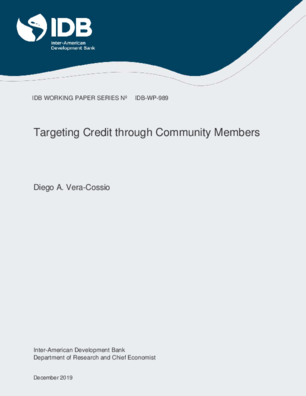Targeting Credit through Community Members
Date
Dec 2019
Limited information about borrowers may create allocative distortions in credit markets. Community-based lending programs may reduce these distortions by exploiting relevant information available to community members. However, a decentralized approach to allocating credit entails balancing issues of risk, neediness, productivity, and favoritism. This paper analyzes this problem in the context of the Thai Million Baht lending program which decentralizes the allocation of loans to an elected group of community members and provides three main results. First, exploiting three years of pre-program data to characterize the set of potential borrowers in terms of repayment, neediness and total factor productivity (TFP), this paper finds that neither of these dimensions explains program participation. Relative to the allocation achieved by community members, a counterfactual repayment-based criterion would have targeted less risky, higher-TFP, but richer entrepreneurs. Second, using socioeconomic networks data, this paper shows that program borrowing is strongly driven by connections to village leaders. This result is explained by differences in information-transmission costs but also favoritism. Third, exploiting quasi-experimental variation in the rollout of the program, this paper uncovers evidence that informal credit markets partially compensate for targeting distortions by redirecting credit towards unconnected households, albeit at higher interest rates than those provided by the program. The results highlight the limitations of community-driven approaches to delivering credit, the tradeoffs across targeting criteria and the role of markets in attenuating allocative distortions.
NO




